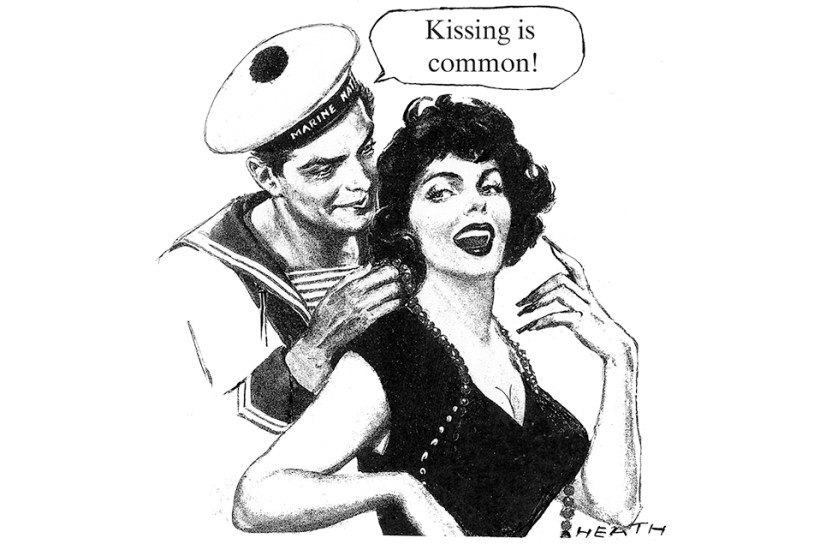A kiss is just a kiss, no? But when it’s Jenni Hermoso, the forward of the victorious Spanish women’s football team, on the receiving end, and the president of the Spanish football federation, Luis Rubiales, doing the kissing, and it’s during the official post-match ceremony in front of an interested global audience… it’s different.
Immediately afterwards, Miss Hermoso declared that she ‘didn’t like it’. Rubiales was defiant. ‘It was a kiss between two friends celebrating something,’ he declared, calling his critics ‘idiots and stupid people’. He may have had in mind the minister of equality in Spain’s caretaker government, Irene Montero, who described the kiss as ‘a form of sexual violence’.
Yes, well, it just shows you how fraught kissing is. In Spain, people do kiss each other as a social thing – on both cheeks, starting with the left. It’s one of several nations where social kissing is the norm. Two kisses is usual, except in Christian Orthodox cultures like Serbia, where you do three, presumably in honour of the Trinity. Britain too has taken to the habit of cheek-kissing, though only in the last generation or so. Before, people shook hands or nodded. I had always been enchanted by the report that men kiss women’s hands in Poland, but after meeting any number of Poles, I am sorry to report that they’ve dropped the habit.
But have you ever thought just how weird kissing is? We do it as a matter of course; it’s part of our idea of amorous behaviour. But it turns out it’s not. In 2015, a group of social scientists published research – that must have been fun – on the subject of romantic kissing in American Anthropologist, based on a set of 168 cultures and surveying 88 ethnographers. And it turns out – whaddya know? – that romantic kissing is common in only 46 per cent of the cultures involved. The remaining 54 per cent say it in other ways. Even in Britain, prostitutes used to bar their clients from lip-kissing – they considered that more intimate than actual sex. Anyway, the word to park for your next quiz is ‘philematology’, the study of kissing.
There are more kisses than the romantic sort, though that has been documented since 2,500 bc in Mesopotamia and Egypt. There were in the past lots of public kisses: of ritual, greeting, respect, deference. It seems the Greeks blew kisses at kings and gods. Romans went in for different sorts, from the kiss of greeting to the erotic snog. Married Roman couples kissed with mouth closed – Plutarch says husbands kissed their wives to see if they’d been drinking. Men of equal rank kissed to show goodwill.
There are lots of kisses in the Bible besides the Song of Solomon. When Judas kissed Jesus, it wasn’t an unusual gesture. St Paul told the Romans to greet each other with a holy kiss. In the early church and the Middle Ages there was the kiss of peace, an actual smacker on the lips; not kissing was a source of contention between Thomas à Becket and Henry II. The interesting development is how, over time, lip-kissing has been turned from a public act into an often private, sexual thing.
So, kissing a female centre forward… how to describe that? I’d say it comes into the class of kiss that’s called taking liberties.
Got something to add? Join the discussion and comment below.
Get 10 issues for just $10
Subscribe to The Spectator Australia today for the next 10 magazine issues, plus full online access, for just $10.
You might disagree with half of it, but you’ll enjoy reading all of it. Try your first month for free, then just $2 a week for the remainder of your first year.








Comments
Don't miss out
Join the conversation with other Spectator Australia readers. Subscribe to leave a comment.
SUBSCRIBEAlready a subscriber? Log in